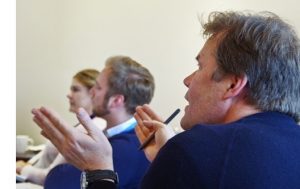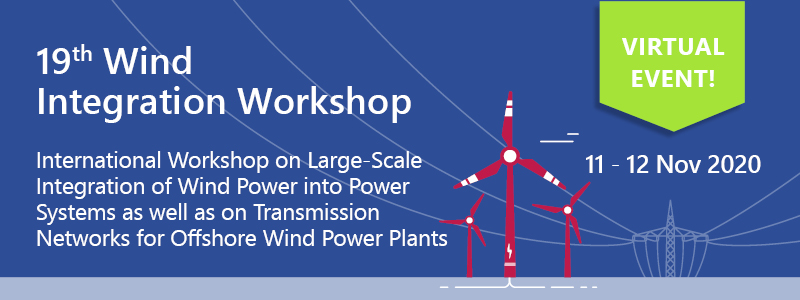Virtual Wind Integration Tutorial
Ancillary Services: Their Role in Enabling Systems with Variable Renewable Energy (VRE) and how VRE Can Participate in them
On Tuesday, 10 November 2020, prior to the start of the Wind Integration Workshop, a tutorial will be held by Energynautics on “Ancillary Services: Their role in enabling systems with large shares Variable Renewable Energy (VRE) and how VRE can participate in them.
The aim of this tutorial is to provide the participants with the necessary technical and regulatory understanding on the following two aspects:
- Role of ancillary services towards enabling systems with Variable Renewable Energy (VRE):
How these services must be reshaped to guarantee a safe, secure and reliable operation of the power system. Innovative ancillary services such as ramping reserve or fast frequency response.
- Participation of VRE in the provision of ancillary services:
Technology and infrastructure needs to enable VRE participation on the ancillary services.
Examples on international best practices on the above mention topics will also be provided within the tutorial. Find a more detailed description here.
Context
Ancillary services are those services provided by generation, transmission and control equipment which are necessary to support the transmission of electric power from producer to purchaser ensuring a safe, secure and reliable operation of the power system. Ancillary services include services intended to ensure frequency stability by balancing short term deviations between load and generation, such as reserves, services that provide control of the voltage, such as reactive power, and emergency services such as black start capability.
Ancillary services are gaining importance in the context of uptake variable renewable energy sources (VRE) as one enabling tool towards achieving a successful the transition from conventional based generation systems to VRE dominated systems. These services themselves are also undergoing a transformation and are being reviewed and updated by system operators in order to continue serving the needs of the power systems where the inherent characteristics of VRE such as their variability and uncertainty, their locational nature or their lack of inertial response are becoming more present in their operation.
Form of presentation and schedule
The Wind Tutorial will be held as virtual tutorial online. Please log into the conference room at least 5 minutes before the start of each session to avoid potential connection issues. It is requested that the participants mute their microphones during the session, unless addressing the speakers.
The tutorial will have a total duration of 2 hours. The contents will be presented in two thematic blocks each with a duration of 45 minutes. Between the blocks there will be a break of 10 minutes and after each block there will be at least 10 minutes for questions. The presentation will contain several sections to address individual questions in a timely manner.
10 November 2020
09:00 – 11:00 (Central European Time)
(03:00 New York // 05:00 Rio de Janeiro // 08:00 London // 13:30 New Delhi // 16:00 Peking // 17:00 Tokio)
Registration
- The Wind Tutorial is not included in the general registration fee.
- As the number of participants for the Wind Tutorial is limited, tickets are available on a first come, first served basis.
- The minimum number of participants is 8.
- The price is 135.00 € (excl. 16% VAT) for regular participants, students pay 120.00 € (excl. 16% VAT) when registered before 12 October 2020. Get details on our Registration & Fees webpage.
- Tutorial fees have to be invoiced with the value-added tax of the country, in which the service is provided (here: Germany).
Energynautics Tutorials
 In our tutorials, you have the opportunity to deepen your knowledge regarding crucial renewables topics in an intimate setting.
In our tutorials, you have the opportunity to deepen your knowledge regarding crucial renewables topics in an intimate setting.
In intense presentations you gain not only detailed knowledge but also a unique hands-on-experience.
The tutorial will contain unique features to ensure an interactive experience for the audience despite the current necessity of an online event.



